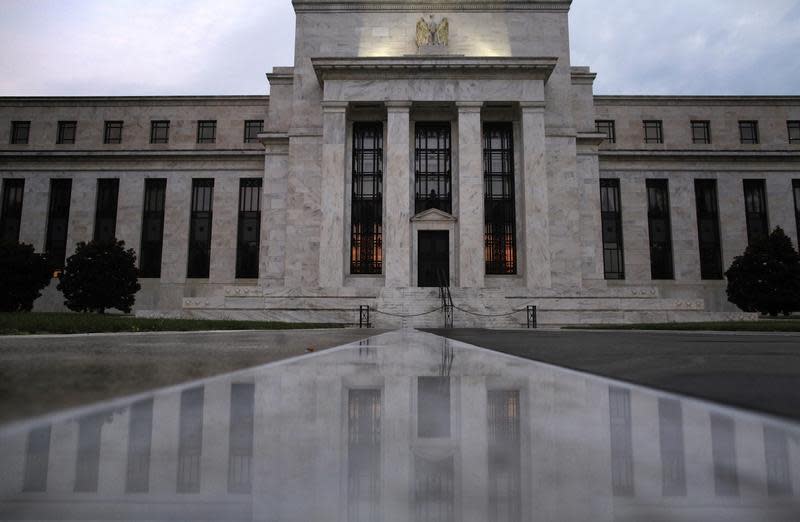Global Economy: No Halloween horrors in store from the Fed

By Alan Wheatley
LONDON (Reuters) - Back in May and June, Federal Reserve Chairman Ben Bernanke played a trick on markets by sketching out a timetable for reducing the central bank's $85 billion-a-month bond buying. Investors recoiled in horror and bond yields surged.
This week, though, they are in for a treat.
The Fed's policy-making committee ends a two-day meeting on Wednesday and the chances are vanishingly small that it will start to dial down the monetary stimulus right away.
The recent government shutdown in Washington and last-gasp deal to raise the federal debt ceiling have simply created too much economic uncertainty.
As a result, the usefulness of September figures on industrial output, retail sales and consumer prices as well as the Institute of Supply Management's October manufacturing survey will be limited.
Apart from a dearth of ‘clean' data for the Fed to analyze, the labor market's lackluster performance has convinced many economists that the Fed will delay ‘tapering' until 2014. What more could liquidity-driven markets ask for?
Jamie Dannhauser of Lombard Street Research, a London consultancy, expects the Fed to start curtailing its bond buying in the first quarter of next year, by which time Bernanke will have been succeeded by his dovish deputy, Janet Yellen, and to end asset purchases by the end of 2014.
Dannhauser is bullish on the U.S. economy, not least because stiff fiscal headwinds will ease next year.
But he said the Fed was likely to maintain very significant monetary stimulus until growth gets closer to pre-crisis trends. Thus a rise in short-term interest rates was unlikely until well into 2015.
"Tapering and even an end to asset purchases are very different from a withdrawal of stimulus," Dannhauser said.
"The U.S. economy still has a very big hole that needs to be filled, and people like Bernanke and Yellen are very acutely aware of this point."
RISKS OF STAYING TOO LOOSE
Many economists, while agreeing that an emergency policy response was needed in 2008, worry that since the 1987 stock market crash central bankers and governments have been too quick to ease in downturns and too slow to tighten in recoveries.
Treats are nice, but too much chocolate can make you ill.
When he was chief economist at the Bank for International Settlements, Bill White issued a series of prescient pre-crisis warnings of bubbles and imbalances that were building up in the global economy. He was politely ignored.
White worries that policy makers are not learning the lessons. It will be harder to return to strong, sustainable growth because fiscal and monetary stimulus is storing up medium-term difficulties, he told a London audience last week.
"Not least of them is that the very easy monetary conditions that we've seen since the crisis have basically impeded the process of deleveraging," White said.
In the Group of 20 leading economies, government, household and corporate debt is now 30 percent greater than it was before the crisis, he said, citing BIS figures.
"We haven't actually dealt yet with the problems of the advanced market economies and in addition, with the crisis having spread to the emerging market economies, we now have a problem that is bigger than before," White said.
THE BIG EASY
Central banks are certainly sending out dovish signals.
The Bank of Japan is intent on doubling its monetary base in two years. The Bank of England, playing down the risk of moral hazard, last week eased its liquidity-provision rules. The Bank of Canada surprised markets by signaling it will not raise interest rates any time soon.
"And while the People's Bank of China has recently tightened liquidity, the extensive influence of Fed policy on global liquidity cycles suggests easy conditions will prevail. Markets are extending their run on this supportive policy outlook," Gustavo Reis of Bank of America Merrill Lynch said in a note.
The European Central Bank has an easing bias, too, and figures from the euro zone are likely to confirm why the bank expects its main policy rate to stay low for an extended period.
Unemployment was probably unchanged in September at a near-record 12 percent, according to economists, who expect that inflation in the year to October held steady at 1.1 percent.
The ECB's definition of price stability is just below 2 percent and new forecasts by its staff in December are likely to project inflation remaining well below this target in 2014 and 2015, according to Greg Fuzesi at JP Morgan in London.
That would significantly reinforce the ECB's forward guidance on its policy stance, Fuzesi said in a report.
"We think it would also put the focus on the much bigger question of why the central bank is not doing more to lift growth and prevent inflation from undershooting its target for so long," he wrote.
(Editing by Catherine Evans)
